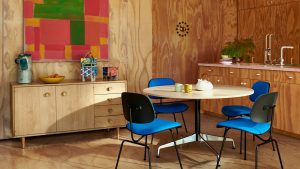Sintered stone has quickly gained popularity in Singapore’s home renovation market, particularly in kitchens. This engineered surface is created through high-pressure and high-temperature processes that mimic natural stone formation, resulting in a durable and versatile material. Whether you’re fitting out an HDB flat, a private condominium, or a landed property, installing a sintered stone kitchen top can be a smart upgrade—but not without caveats.
Discover a breakdown of the material’s strengths and limitations across different housing types in the city-state.
Sintered Stone Kitchen Tops in HDB Flats
A sintered stone kitchen top offers a high-performance solution in HDB kitchens, where space is generally more compact and functionality is prioritised. The material is resistant to stains, heat, and scratches, making it particularly suitable for the daily cooking routines of most HDB households. It also supports seamless integration with backsplashes and vertical cabinetry, providing a clean, uniform aesthetic that works well with space-saving layouts.
That said, one of the key challenges in HDB settings is the cost-to-space ratio. Sintered stone is not the most affordable option, and for homeowners on tighter budgets, the investment may feel disproportionate. Installation is another consideration, as heavier materials like sintered stone require proper substrate support. Older HDB units might need additional reinforcement or minor structural assessments. Moreover, homeowners must comply with HDB renovation guidelines, which may restrict the extent of demolition or layout changes required to accommodate a new countertop.
Despite these constraints, many HDB homeowners opt to pair their sintered stone kitchen top with a sintered stone table for a cohesive and easy-to-maintain dining setup within the same compact zone.
Sintered Stone Kitchen Tops in Condominiums
Sintered stone provides both visual appeal and durability in condominiums, where kitchen spaces are typically larger and more design-forward. Its wide range of colours and finishes, from marble-inspired veining to industrial matte tones, offers flexibility for homeowners aiming for a minimalist, modern luxe, or Scandinavian aesthetic. Upgrading to a sintered stone kitchen top can also be a value-adding renovation for resale condominiums, appealing to design-conscious buyers.
However, renovation permissions in condominiums are usually subject to MCST rules. Delivering and installing a sintered stone slab, especially full-length pieces, may require scheduling work within limited renovation hours, and elevator access may restrict the slab’s size. Homeowners must also account for the weight of the material, which could pose a challenge in units where kitchen flooring systems weren’t originally designed to bear such loads.
Some condominium owners also opt for matching sintered stone table tops to extend the kitchen design language into the dining or open-concept living space. This approach can be a strong design move, particularly in units with dry and wet kitchen separations, or when hosting guests is a regular activity.
ALSO READ: 4 Reasons to Choose Sintered Stone for Your Kitchen Countertop Material
Sintered Stone Kitchen Tops in Landed Homes
Landed properties offer the most flexibility for integrating a sintered stone kitchen top, both in terms of size and design execution. Due to fewer restrictions around layout changes, slab size, and delivery logistics, landed homeowners can explore bolder options such as waterfall edges, extra-thick profiles, or L-shaped wraps. Sintered stone’s low porosity and heat resistance also make it ideal for homes with high-use kitchens, particularly those that incorporate open-fire or commercial-style cooking appliances.
The main trade-off in a landed home context is cost. While homeowners in this segment may be less price-sensitive, large-format sintered stone kitchen tops, especially those imported or customised, can be significantly more expensive than quartz or granite alternatives. Also, due to the open layout of many landed kitchens, improper sealing or subpar installation can result in noticeable joins or inconsistencies, diminishing the premium look the material is known for.
A sintered stone table top in such homes often becomes a centrepiece, whether in a formal dining area or as part of an outdoor kitchen extension. These tables are not only visually striking but also highly functional, withstanding weather exposure and heavy usage.
Conclusion
Sintered stone offers a strong combination of aesthetics, performance, and longevity, but the practicality of installing a sintered stone kitchen top varies across HDB, condominium, and landed homes. Each property type presents unique constraints, from budget to regulatory approvals to structural capacity. While the material is suitable for a wide range of households, careful consideration of compliance, weight load, and installation quality is vital to ensuring a long-term investment.
Visit Stone Loft to elevate your kitchen space with a sintered stone kitchen top.



